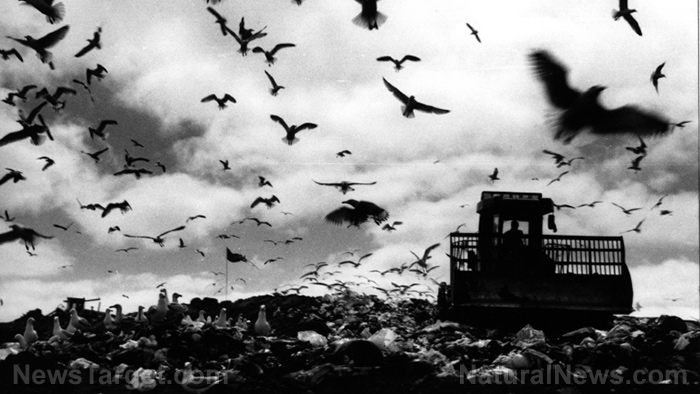Low runoff from the Colorado River threatens water shortage across 7 western states
09/20/2020 / By Virgilio Marin

Drought conditions this year have been so bad that water coming from the Colorado River has dropped to below-average levels, jeopardizing the two largest man-made water reservoirs and threatening water shortage in several western states.
The U.S. Bureau of Reclamation (BOR) conducted a simulation study calculating future water levels in Lake Powell and Lake Mead as water coming from the river is just 55 percent of the annual average. Results released Sep. 15 showed that the reservoirs are 12 percent more likely to fall to critically low levels by 2025 than projected in the spring.
“This is a pretty significant increase over what was projected in April due to the declining runoff this year,” said hydrologist Carly Jerla, who works as an analyst for the bureau.
The forecast comes as Arizona, California, Colorado, New Mexico, Nevada, Utah, Wyoming and Mexico are in the middle of a heated negotiation over the use of the river in the next several years. The states have already been forced to conserve water to secure the long-term use of the river, but the continued drought conditions hamper conservation efforts.
Colorado water may drop to critical levels
The Colorado River, which supplies water to about 40 million people from Wyoming to Arizona, is now on its 21st year of extended drought. The bureau conducts five-year projections at least three times a year using the Colorado Simulation System and “stress testing” techniques to determine potential shortages if drought conditions persist.
Lake Mead currently stands at 40 percent (1,083) of its full capacity while the upstream reservoir Lake Powell is 48 percent full (3,598). If current drought conditions continue, the bureau said that there’s a 20 percent likelihood the two reservoirs will drop to critical levels in 2025.
Lake Mead is particularly vulnerable as there’s a 32 percent likelihood it will fall into a shortage by that year. When water level reaches 1,075 feet, Arizona and Nevada will have to face deeper cuts as part of a drought contingency plan signed by the states along with California and Mexico last year. The three states were pressured to sign a deal with Wyoming, Utah, New Mexico and Colorado to voluntarily cut their water use after the federal government warned of a mandatory squeeze on the supply.
“In the absence of consensus plans from the Basin states, the federal government must take action to protect the river and all who depend on it – farmers and cities across seven states,” said Bureau Comissioner Brenda Burman in a statement.
Burman said that the agreement proves to be effective in addressing water shortage, with water levels in the reservoir going up by six feet in 2019. Terry Fulp, the bureau’s regional director, added that Lake Mead is about 40 feet higher today than it would be without current and previous conservation efforts. Such initiatives helped prevent larger cuts in water deliveries.
The models provide valuable information to cities and farms in preparation for more drought conditions and potential water shortages, especially in light of the latest forecast. According to Burman, “I think what the projections are showing us is we have greater uncertainty than we did last year.”
Authorities initially expected that reservoir levels will go up this year because the Rocky Mountains were blanketed with a snowpack that was slightly above average over the winter. But with many places experiencing record-high temperatures, the runoff from the Colorado River turned to be 55 percent of the annual average. (Related: Devastating drought is imminent: Scientists surprised to find Colorado River Basin drying up faster than expected.)
Burman bemoaned the projection numbers and said that she hopes the region heads into years of wet conditions. But if it doesn’t, she expects the states to come together and make it work.
Climate.news has more on the drought conditions in the western U.S.
Sources include:
Tagged Under: Arizona, California, Climate, Colorado River, crisis, disaster, Drought, environment, Lake Mead, Lake Powell, Nevada, water shortage, water supply, western states
RECENT NEWS & ARTICLES
COPYRIGHT © 2017 ENVIRON NEWS

















